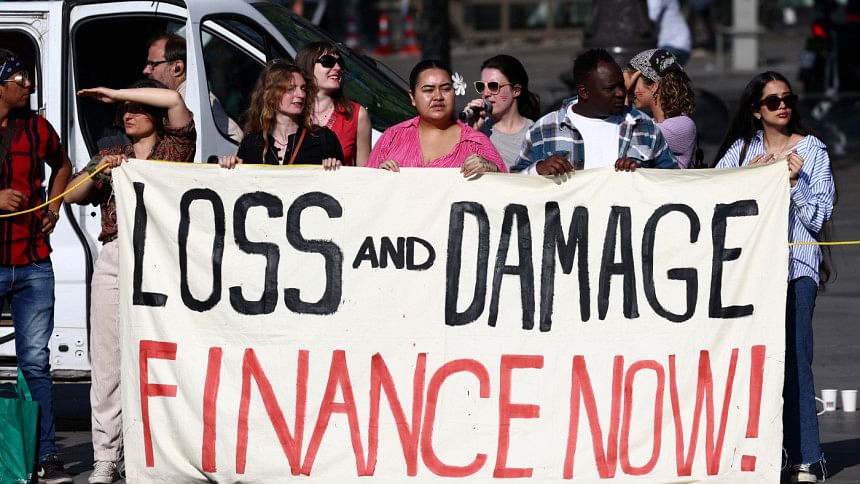Can we finally put the Loss and Damage Fund to use?

COP28 started in Dubai with the declaration to operationalise the Loss and Damage Fund and commitments from the UAE, Germany, the UK and other countries—a small step towards climate justice for climate-vulnerable countries, such as Bangladesh. However, sceptics are wondering whether these steps would indeed bear fruit.
After close to 30 years of advocacy from developing countries, the proposal for the Loss and Damage Fund was adopted at COP27. And this year, the commitment for operationalising it has come. However, civil society and justice groups have major objections about the World Bank hosting the fund.
While we welcome these commitments, it remains to be seen how fast the amounts are transferred to the pot and are made available for vulnerable communities.
Time is of the essence. During this period of protracted negotiations, much has been the suffering of the most vulnerable groups, especially women, children, and persons with disabilities. Post COP27, for example, Bangladesh has been hit by multiple cyclones and floods, such as cyclones Mocha and Midhili. Therefore, the urgency of operationalising the fund cannot be overemphasised—just as the need to keep global temperature rise below 1.5 degrees Celsius and increase adaptation funds—because loss and damage will only escalate if we see business as usual.
This development also raises the question of whether the initially committed amounts are, in any way, an effort to divert the attention of the community and climate activists.
We often hear about having to globally share the resources available given multiple crises, but such discussions and arguments are no longer acceptable. We have seen specific countries and global leaders mobilising funds whenever they considered the issue relevant or their priority. Clearly, the Loss and Damage Fund has to be the top priority! It should get operational in a meaningful manner.
Simultaneously, our concerted efforts to ensure the biggest polluters pay their dues and keep their commitments must continue. The commitment of $17.5 million from the US and $10 million from Japan is a pittance. To put things into perspective, on average, tropical cyclones cost Bangladesh about $1 billion annually. So, we need to keep asking if there will be a regular and continuous flow into the fund by the rich countries for the damage they have caused and are continuing to cause.
There is evidence of hundreds of displaced people due to climate-induced disasters. Research findings highlight how women and girls suffered gender-based violence; families that have become climate migrants are already in difficult and vulnerable situations. For the long-due climate justice, it's therefore imperative that we consider loss and damage not based only on the outcome of COP28.
The requests from affected communities have always been that they want the fund to be easily accessible; money needs to be given to those who are at the frontline of loss and damage. These communities are fearful of bureaucracy and delays when institutions such as the World Bank are given the responsibility of hosting the fund. Now, we have to see whether the fund is managed with community representatives having a seat at the decision-making table, with their voices being heard. Of course, it should be women, the youth, and persons with disabilities in the governance role.
Loss and damage is a far more complicated concept than it sounds. It has far-reaching impacts, some of which are often overlooked. The loss of childhood, education, physical and mental health, opportunities, social cohesion, and social capital cannot be compensated for overnight. It calls for support and investment immediately as well as over time. We have miles to go before we can claim that justice has been ensured for us.
Farah Kabir is the country director of ActionAid Bangladesh.
Views expressed in this article are the author's own.
Follow The Daily Star Opinion on Facebook for the latest opinions, commentaries and analyses by experts and professionals. To contribute your article or letter to The Daily Star Opinion, see our guidelines for submission.

 For all latest news, follow The Daily Star's Google News channel.
For all latest news, follow The Daily Star's Google News channel. 









Comments